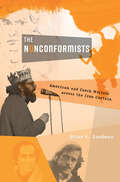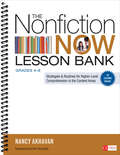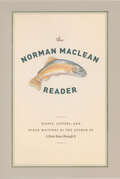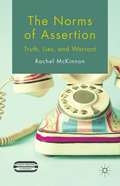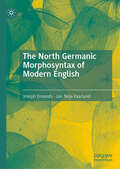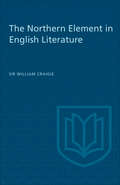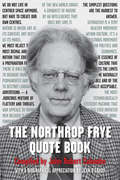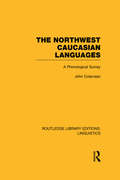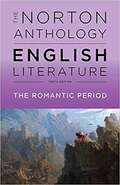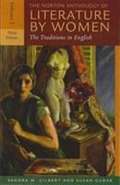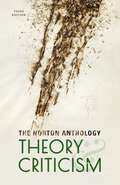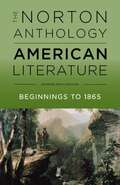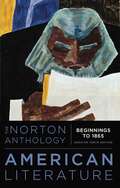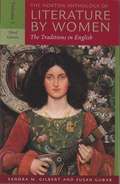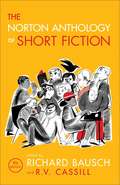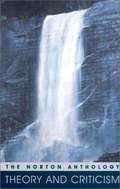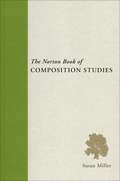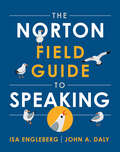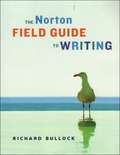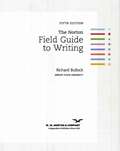- Table View
- List View
The Non-User-Friendly Guide For Aspiring TV Writers: Experience and Advice From the Trenches (Million Dollar Writing Series) (Million Dollar Writing Series)
by Steven L. SearsA veteran writer presents his personal account of being in the trenches of the television industry, offering advice and tactics for aspiring scriptwriters. Steven L. Sears has had a successful career in film and television encompassing over thirty years of involvement at all levels. From his beginnings as a staff writer on the hit NBC show The A-Team, to Co-Executive Producer on the hit series Xena-Warrior Princess for MCA/Universal, creator and Executive Producer of Sheena for Sony/TriStar Television, and many pilot and development deals with the major studios and production companies, he has amassed a huge amount of experience and knowledge about the inner workings of the entertainment industry. In The Non-User-Friendly Guide for Aspiring Television Writers, he shares that experience and gives advice for those considering a career in television writing. Instead of the traditional academic and sterile approach, Steven answers questions from a personal, first person perspective. The questions have been culled from the real world, people seeking out his advice and looking for the experience that most books don&’t have. Some of what he writes about are hard and difficult facts to accept about the business. Other times it&’s his opinion based on his vast experience. But all of it is unsweetened and direct. Even if you don&’t like his answers, he will certainly make you think hard about your approach and choices when pursuing a career in an extremely difficult industry. As a result, you will be better prepared to achieve the success that he has had. Accessible, personable, and relaxed, &“It&’s like having lunch with Steven and asking him questions about the business. Without having to watch him eat.&”
The Nonconformists: American and Czech Writers across the Iron Curtain
by Brian K. GoodmanHow risky encounters between American and Czech writers behind the Iron Curtain shaped the art and politics of the Cold War and helped define an era of dissent.“In some indescribable way, we are each other’s continuation,” Arthur Miller wrote of the imprisoned Czech playwright Václav Havel. After a Soviet-led invasion ended the Prague Spring, many US-based writers experienced a similar shock of solidarity. Brian Goodman examines the surprising and consequential connections between American and Czech literary cultures during the Cold War—connections that influenced art and politics on both sides of the Iron Curtain.American writers had long been attracted to Prague, a city they associated with the spectral figure of Franz Kafka. Goodman reconstructs the Czech journeys of Allen Ginsberg, Philip Roth, and John Updike, as well as their friendships with nonconformists like Havel, Josef Škvorecký, Ivan Klíma, and Milan Kundera. Czechoslovakia, meanwhile, was home to a literary counterculture shaped by years of engagement with American sources, from Moby-Dick and the Beats to Dixieland jazz and rock ’n’ roll. Czechs eagerly followed cultural trends in the United States, creatively appropriating works by authors like Langston Hughes and Ernest Hemingway, sometimes at considerable risk to themselves.The Nonconformists tells the story of a group of writers who crossed boundaries of language and politics, rearranging them in the process. The transnational circulation of literature played an important role in the formation of new subcultures and reading publics, reshaping political imaginations and transforming the city of Kafka into a global capital of dissent. From the postwar dream of a “Czechoslovak road to socialism” to the neoconservative embrace of Eastern bloc dissidence on the eve of the Velvet Revolution, history was changed by a collision of literary cultures.
The Nonfiction Now Lesson Bank, Grades 4-8: Strategies and Routines for Higher-Level Comprehension in the Content Areas
by Nancy L. AkhavanWhat exactly makes The Nonfiction NOW Lesson Bank such a stand-out? If you consider the amount of instructional support, that alone is substantial enough to transform your teaching. But Nancy Akhavan happens to be an educator who has performed many roles over her career so she divests in this book just about everything in her professional vault A whole new vision of teaching nonfiction 50 powerhouse lessons A bank of short informational texts Dozens of student practice activities Graphic organizers for taming textbooks Unlike so many books, this one will live its life in actual use: dog-eared, sticky-noted, and loved.
The Norman Maclean Reader: Essays, Letters, and Other Writings by the Author of A River Runs through It
by Norman MacLeanSelected works and incidental writings by the celebrated author of A River Runs Through It, plus excerpts from a 1986 interview.In his eighty-seven years, Norman Maclean played many parts: fisherman, logger, firefighter, scholar, teacher. But it was a role he took up late in life, that of writer, that won him enduring fame and critical acclaim—as well as the devotion of readers worldwide. Though the 1976 collection A River Runs Through It and Other Stories was the only book Maclean published in his lifetime, it was an unexpected success, and the moving family tragedy of the title novella—based largely on Maclean’s memories of his childhood home in Montana—has proved to be one of the most enduring American stories ever written.The Norman Maclean Reader is a wonderful addition to Maclean’s celebrated oeuvre. Bringing together previously unpublished materials with incidental writings and selections from his more famous works, the Reader will serve as the perfect introduction for readers new to Maclean, while offering longtime fans new insight into his life and career.In this evocative collection, Maclean as both a writer and a man becomes evident. Perceptive, intimate essays deal with his career as a teacher and a literary scholar, as well as the wealth of family stories for which Maclean is famous. Complete with a generous selection of letters, as well as excerpts from a 1986 interview, The Norman Maclean Reader provides a fully fleshed-out portrait of this much admired author, showing us a writer fully aware of the nuances of his craft, and a man as at home in the academic environment of the University of Chicago as in the quiet mountains of his beloved Montana.Various and moving, the works collected in The Norman Maclean Reader serve as both a summation and a celebration, giving readers a chance once again to hear one of American literature’s most distinctive voices.Praise for The Norman MacLean Reader“A solid, satisfying, well-made body of work by a patient craftsman.” —Chicago Tribune“The Norman Maclean Reader fills out and makes more human the impressions of the restless, inquiring storyteller we saw in previously published works. In his writings, at their best, we too feel the thrusts and strains. He is a writer of great beauty, in his own terms.” —Financial Times“Weltzien has not only done great service for Norman Maclean’s readers, he has rightly expanded Maclean’s place in American literature . . . . For me, The Norman Maclean reader is discovered treasure.” —Bloomsbury Review
The Norms of Assertion
by Rachel MckinnonSuppose that you ask me what time an upcoming meeting starts, and I say, '4 p. m. ' Whenever we make claims like this, we're asserting. If the meeting is really at 3:30 p. m. , you'll be late, and probably rather upset that I told you the wrong time. In some sense, it seems like I'm on the hook for having said something false. This sense that I've done something wrong suggests that there are certain standards of evaluating assertions: a way of distinguishing between good and bad, appropriate and inappropriate. We call these standards norms. This book is about the norms of assertion. Various philosophers have typically attempted to articulate the level of epistemic support required for properly asserting. Some argue, for example, that one must know what one asserts. Others argue that one merely needs to justifiably believe what one asserts–an epistemic standing weaker than knowledge. The purpose of this book is to defend what I propose as the central norm governing our practice of assertion, which I call the Supportive Reasons Norm (SRN). In rough outline, the standards for warrantedly asserting shift with changes in context, although knowledge is never required for warrantedly asserting. In fact, in some special contexts, speakers may warrantedly lie. This latter feature particularly sets apart my view from others in the debate.
The North Germanic Morphosyntax of Modern English
by Jan Terje Faarlund Joseph EmondsThis book argues that Middle English - and hence Modern English - is a direct descendent of Anglo Norse, the language of Viking settlers who invaded and ruled the north and east of England (the so-called Danelaw) for about 200 years preceding the Norman conquest. The authors challenge the widely accepted assumption that Middle English descends from Anglo-Saxon. Presenting over 20 arguments in morphology and syntax, they show that the patterns found in standard history of English sources derive from the North Germanic Scandinavian languages. The book shows that, while Danes ruled all England (1013-1066), their Anglo-Norse, lexically but not grammatically close to Anglo-Saxon, superseded the latter throughout England. Sentential word order, modern phrasal verbs, stranded prepositions, and standard regular noun plurals, phonetic z, and split infinitives became Norse hallmarks that persist to this day, while numerous indications of West Germanic (German-style) grammar disappeared entirely. As Anglo-Norse became Middle English, it absorbed much vocabulary from the Anglo-Saxons. This book suggests that in the Middle English German-sourced vocabulary, eliminating borrowed Romance, purely Anglo-Saxon vocabulary may have been double that of purely Norse origin. However, language history is not determined by its vocabulary; what counts is rather a language’s syntax, and the authors posit that this is what makes Modern English Scandinavian. This book will be of interest to scholars of Linguistics, Indo-European Studies, and English Language and Literature, particularly those studying the historical linguistic development of Germanic languages, as well as syntax more broadly.
The Northern Element in English Literature
by William CraigieIn 1931, Sir William Craigie gave the Alexander Lectures in English at the University of Toronto entitled The Northern Element in English Literature with a focus on proving the existence of a Northern literary culture, comparing English literature with Northern literature, especially that of the Scottish and Scandinavians. The book is divided into four lectures.
The Northrop Frye Quote Book
by Northrop Frye Jean O'Grady John Robert ColomboA collection of quotations from Canada’s greatest literary theorist. "There is no Canadian writer of whom we can say … that their readers can grow up inside their work without ever being aware of a circumference." Northrop Frye came to that conclusion after a detailed study of the imaginative achievements of Canada’s writers from the earliest period to 1965, when that sentence from his study first appeared in print. Over the decades since then, the statement has come to be regarded as a benchmark of individual and national literary achievement. The Northrop Frye Quote Book is a specialized dictionary of quotations on all subjects that is based on the thoughts and writings of one person. It is the handiwork of a single contributor, albeit the cogitations of a remarkable one. It is also evidence that there is a Canadian writer of whom it may be said that we can grow up inside his work "without ever being aware of a circumference." John Robert Colombo has written, translated, edited, or compiled over two hundred books, including seven dictionaries of quotations. He is a graduate of the University of Toronto and a Fellow of the Frye Centre at Victoria University. Jean O’Grady, a graduate of the University of Toronto, served as the associate editor of The Collected Works of Northrop Frye. She is also the author of the biography of Margaret Addison, the first dean of women at Victoria College.
The Northwest Caucasian Languages: A Phonological Survey (Routledge Library Editions: Linguistics)
by John ColarussoPerhaps more than any other group of languages those of the Caucasus are famous for their enormous and difficult consonantal systems. It is by no means exceptional for one of these languages to have as many as 50 consonants, and of these languages those from the Northwest Caucasus have the largest and most complex consonantal systems. The extensive use of the articulatory regions of the mouth together with the occurrence of secondary modifications at many of these points is unequalled by any other known group of languages. This detailed study examines the languages of the Northwest Caucasus and provides an essential guide to this most complicated group of languages.
The Norton Anthology Of English Literature: Volume D - The Romantic Period
by Stephen GreenblattA responsive, refreshed, and media-rich revision of the best-selling anthology in the field <P><P> The most trusted anthology for complete works and helpful editorial apparatus. The Tenth Edition supports survey and period courses with NEW complete major works, NEW contemporary writers, and dynamic and easy-to-access digital resources. Also available is an ebook featuring exciting, teachable core selections of some of the very best of English literature from the print anthology. For more information on this digital offering, including its Table of Contents, visit the ebook page here.
The Norton Anthology Of Literature By Women: The Traditions In English
by Sandra M. Gilbert Susan GubarNow, the much-anticipated Third Edition responds to the wealth of writing by women across the globe with the inclusion of 61 new authors (219 in all) whose diverse works span six centuries. A more flexible two-volume format and a versatile new companion reader make the Third Edition an even better teaching tool. "As diversity itself has shaped the evolution of feminist criticism, from its early preoccupation with women's shared experiences to its more recent absorption in the complex issues and assumptions informing English-language texts by women writers of diverse geographical, cultural, racial, sexual, religious, and class origins and influences, so diversity has shaped the revisions of this anthology." —From the Preface
The Norton Anthology Of Theory And Criticism
by Jeffrey Williams John McGowan Vincent Leitch William Cain Laurie Finke T. Sharpley-WhitingThe gold standard anthology for anyone who wants to understand the development and current state of literary theory. Offering 191 pieces by 157 authors, The Norton Anthology of Theory and Criticism, Third Edition, is more comprehensive and more varied in its selection than any other anthology. Forty-eight NEW selections—concentrated mostly on the twentieth and twenty-first centuries—make the book not only the best overview of the history of theory, but also a remarkably up-to-date portrait of the state of theory today.
The Norton Anthology of American Literature: Shorter Volume 1
by Robert S. LevineThe most-trusted anthology for complete works, balanced selections and helpful editorial apparatus, The Norton Anthology of American Literature features a cover-to-cover revision. The ninth edition introduces new General Editor Robert Levine and three new-generation editors who have reenergized the volume across the centuries. Fresh scholarship, new authors―with an emphasis on contemporary writers―new topical clusters, and a new ebook make the Norton Anthology an even better teaching tool and an unmatched value for students.
The Norton Anthology of American Literature: Volume 1
by Robert S. Levine Sandra M. GustafsonThe Shorter Tenth Edition introduces diverse, compelling, relevant texts―from Civil War songs to The Turn of the Screw to The Great Gatsby to poems by Claudia Rankine to a science fiction cluster featuring Octavia Butler and N. K. Jemisin. And continuing its course of innovative and market-responsive changes, the anthology now offers resources to help instructors meet today’s teaching challenges. Chief among these resources is InQuizitive, Norton’s awarding-winning learning tool, which includes interactive questions on the period introductions and often-taught works in the anthology. In addition, the Shorter Tenth Edition maintains the anthology’s exceptional editorial apparatus and generous and diverse slate of texts overall. Available in print and as an annotatable ebook, the Shorter Tenth Edition is ideal for online, hybrid, or in-person teaching.
The Norton Anthology of Drama
by Ellen Gainor; Stanton B. Garner; Martin PuchnerChoose from the most comprehensive collection of plays. Enjoy accessible apparatus that helps students better analyze the works. Savor an eye-catching and informative illustration program focusing on performance. All for an unbeatable price.Revised in response to suggestions from hundreds of instructors and students, the Third Edition features five NEW plays (four in the Shorter Edition), NEW critical "Perspectives" sections, and an expanded suite of free digital resources.
The Norton Anthology of English Literature: Volume E - The Victorian Age
by Stephen GreenblattA responsive, refreshed, and media-rich revision of the best-selling anthology in the field <P><P> The most trusted anthology for complete works and helpful editorial apparatus. The Tenth Edition supports survey and period courses with NEW complete major works, NEW contemporary writers, and dynamic and easy-to-access digital resources. Also available is an ebook featuring exciting, teachable core selections of some of the very best of English literature from the print anthology. For more information on this digital offering, including its Table of Contents, visit the ebook page here.
The Norton Anthology of Literature by Women: The Traditions in English, Volume 1
by Susan Gubar Sandra Gilbert<p>Long the standard teaching anthology, the landmark Norton Anthology of Literature by Women has introduced generations of readers to the rich variety of women’s writing in English. <p>Now, the much-anticipated Third Edition responds to the wealth of writing by women across the globe with the inclusion of 61 new authors (219 in all) whose diverse works span six centuries. A more flexible two-volume format and a versatile new companion reader make the Third Edition an even better teaching tool.</p>
The Norton Anthology of Short Fiction (Eighth Edition)
by Richard Bausch<p>One of the most celebrated writers and teachers of fiction, Richard Bausch, pairs his insight and inspiration with Norton's trusted editorial standards to deliver the finest teaching anthology available. <p>The Norton Anthology of Short Fiction features 152 works―many of them new to this edition―by 130 authors, offering a broad collection of short stories with the most thoughtful annotations and apparatus on the market. With a new Authors in Depth feature, an extensive Reviews and Commentaries section, and expanded coverage of Writers on Writing, the Eighth Edition provides a wealth of criticism of key works and authors, as well as the opportunity to look deeper into the craft of fiction.</p>
The Norton Anthology of Theory and Criticism
by Vincent B. LeitchThe definitive anthology of literary theory and criticism
The Norton Book of American Autobiography
by Jay PariniThe Editor's opinion of the best of autobiography from American writers since the founding of the Nation.
The Norton Book of Composition Studies
by Susan MillerThe Norton Book of Composition Studies introduces new students to the historical development and most consequential themes and emphases of the field’s scholarship. It serves both as textbook as well as professional reference.
The Norton Field Guide To Writing (Fourth Edition with 2016 MLA Update)
by Richard Bullock Francine Weinberg Maureen Daly GogginThe Norton Field Guide to Writing's flexibility and ease of use have made it the leading rhetoric text on the market--and a perfect choice for committees representing varying teaching styles. With just enough detail -- and color-coded links that send students to more detail if they need it -- this is the rhetoric that tells students what they need to know but resists the temptation to tell them everything there is to know. The Fourth Edition includes new chapters on summarizing and responding, on developing academic habits of mind, and on writing literary analysis. The Norton Field Guide to Writing is also available with a handbook, an anthology, or both. To make the book more helpful for multilingual writers, the versions with the handbook include new chapters on idioms, prepositions, and Englishes; to accommodate instructors and programs teaching literary analysis, the versions with the anthology include two student essays that analyze literature and five short stories and poems for analysis. All versions are available as low-cost ebooks and in mobile-compatible formats for smart phones and tablets.
The Norton Field Guide to Speaking (First Edition)
by John Daly Isa EnglebergA uniquely flexible and teachable guide to public speaking The Norton Field Guide to Speaking offers students the kind of helpful advice and encouragement found in leading full-length textbooks in a user-friendly, to-the-point, easily referenced “field guide” format. Its uniquely flexible, modular organization gives experienced instructors the freedom to teach their course as they choose, while its color-coded cross-referencing system and extensive student and instructor resources provide the structural support and guidance that new instructors need. This purchase offers access to the digital ebook only.
The Norton Field Guide to Writing
by Richard BullockFrom the preface: I began work on The Norton Field Guide to Writing with three goals in mind: (1) to offer the kind of writing guides found in the best rhetorics, (2) to make the book as user-friendly as the most popular handbooks, and (3) to keep it brief. If I've gotten it right, this book will be a handy guide that will help college students with all their written work. Just as there are field guides for bird watchers, for gardeners, and for accountants, this will be one for writers.
The Norton Field Guide to Writing
by Richard H. BullockThe best-selling, most flexible rhetoric―now with advice for reading and writing across disciplines. <p><p> The Norton Field Guide lets you teach the way you want to teach. Short chapters with just enough detail can be assigned in any order. Color-coded links send students to more detail if they need it. Menus, directories, and a glossary/index all make the book easy to navigate. This flexibility makes it work for first-year writing, stretch, ALP, co-req, dual-enrollment, and integrated reading-writing courses. <P><p> The Norton Field Guide MLA and APA Update Edition features the latest documentation guidelines from the ninth edition of the MLA Handbook (2021) and the seventh edition of the Publication Manual of the American Psychological Association (2020).

